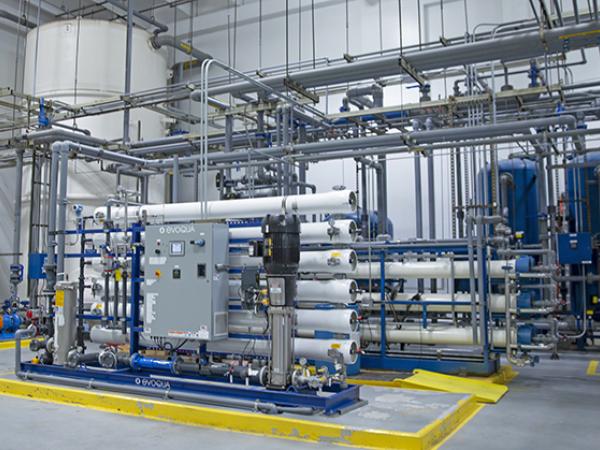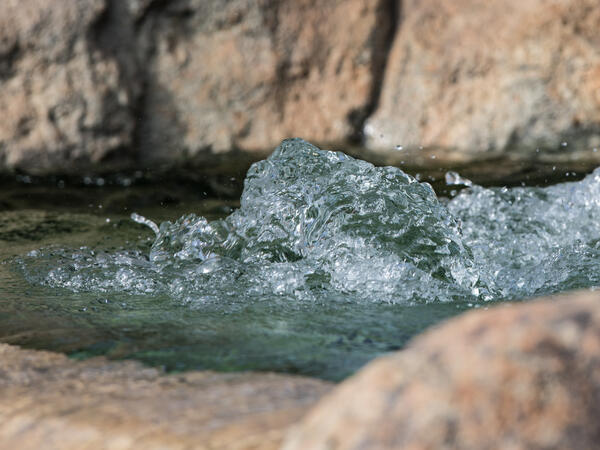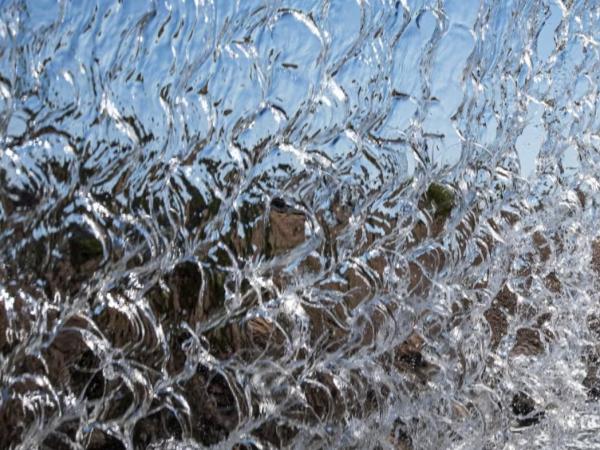The Colorado River is over-allocated, meaning that the total volume of water users are entitled to on paper each year nearly always exceeds the physical amount of water the system produces. Over two decades of drought have compounded this problem, and many experts believe that climate change will cause long-term reductions in the Colorado River’s flows.
According to the U.S. Geological Survey, every temperature increase of 1 degree Celsius (1.8 degrees Fahrenheit) in the Upper Basin results in a 9.3% reduction in flows. Learn more.
Colorado River water imported into Central Arizona via the Central Arizona Project (CAP) canal is used by municipal water providers in five main ways:
- It can be delivered to a surface water treatment plant, where it is treated to meet Safe Drinking Water Act requirements and then pumped through the municipal water provider’s transmission and distribution system to customers’ taps
- It can be delivered directly to a non-potable use such as a park or golf course
- It can be delivered to another entity in exchange for other water sources
- It can be delivered to an underground storage facility (USF) for percolation into local aquifers, or
- It can be delivered to a groundwater savings facility (GSF) where it is used to grow crops.
Municipal uses are modest, encompassing only 13% of our total Colorado River Basin water use.
Outside of municipal uses, Colorado River water is used for irrigated agriculture (59%), reservoir evaporation (12%), and riparian and wetlands (16%).
Areas with heavy reliance on groundwater were identified and designated as Active Management Areas (AMAs). The AMAs were established to provide long-term management and conservation of their limited groundwater supplies. Within AMAs, the Arizona Department of Water Resources administers state laws, develops and implements groundwater management plans, explores ways of augmenting water supplies to meet future needs, and works to develop public policy in order to promote efficient use and an equitable allocation of available water supplies. Statutory management goals for each AMA guide the policies for managing water in these areas. Outside of AMAs, groundwater rights in Arizona are generally tied to ownership of the overlying surface land, meaning they cannot be bought or sold separately from the land. Learn more.
The 1980 Groundwater Management Act includes provisions to help prevent this scenario. Under the Act, there are two kinds of areas in which groundwater is regulated:
1. Irrigation Non-Expansion Areas (INAs) – wells larger than small residential wells are metered, and their groundwater use is reported annually. In addition, there is a prohibition on new irrigated agriculture (defined as two or more acres).
2. Active Management Areas (AMAs) – metering and reporting of groundwater use; prohibition on new irrigated agriculture; developments of six or more homes cannot be platted without proof of a 100-year supply of water that is physically, financially, and legally available. Every ten years, ADWR develops a new management plan for each AMA, with increasingly rigorous conservation and efficiency requirements for all sectors. Agriculture tends to be the biggest water-using sector, and since 1980, new irrigated agriculture has been prohibited within the AMAs and Irrigation Non-Expansion Areas. (No such prohibition is in place outside the AMAs and INAs, which is why some parts of the state have seen an influx of industrial-scale, groundwater-dependent agriculture.) Farms with grandfathered wells are permitted to pump groundwater to irrigate their crops. Energy costs to pump groundwater are a consideration for farmers, particularly as the water table falls and more energy is required to pump it for use. At some point, the energy costs may render some types of irrigated agriculture unprofitable.
Usually, if municipal water is available it is much less expensive and far more reliable than water from an individual private well. Outside AMAs and INAs, there is virtually no regulation on the amount of water a well owner can pump.
Central Arizona municipal water providers will continue to adapt to ensure sufficient and resilient water supplies. Past successes include significant reductions in the use of water per capita through conservation, the extensive use of reclaimed water, the development of diverse water portfolios that include Colorado River water and local Salt and Verde River watersheds, the banking of Colorado River and reclaimed water underground in local aquifers and collaborative regional planning that includes leases and exchanges of both water and infrastructure.
Additional adaptations may include enhanced conservation, land-use planning that includes incentivizing development on lands with better access to renewable surface water supplies, new and innovative regional partnerships to exchange and lease water and leverage infrastructure between municipal water providers, new infrastructure to treat and deliver wastewater as drinking water, increasing the capacities of local reservoirs, transferring high-priority Colorado River water into Central Arizona via purchase or lease and importation of new water supplies such as desalinated ocean water or brackish groundwater.
Outside of Central Arizona, groundwater, surface water, brackish groundwater desalination, and ocean desalination projects are being implemented. These include the Yuma Desalting Plant, the North Central Arizona Pipeline, and the Binational Desalination Plant located in the Sea of Cortez. Learn more.
Tools
Fact sheets
Research and policy briefs

Technology Roadmap: Sea of Cortez Desalination
The Sea of Cortez Desalination Roadmap encompasses the project scope and considers the magnitude of an intake in a sea with high tidal fluctuations, a desalination plant, and long-distance conveyance with extensive…

Technology Roadmap: Industrial Water
This Technology Roadmap for industrial water summarizes drivers and research opportunities that support industrial water recycling and onsite reuse.

Technology Roadmap: Brackish Groundwater
Brackish groundwater represents the largest unallocated water resource in the state of Arizona, “with more than 600 million acre-feet (AF) of recoverable brackish groundwater in storage.”

Technology Roadmap: Atmospheric Water Extraction (AWE)
Water extracted from the atmosphere is essentially pure water, therefore, atmospheric water extraction (AWE) holds great potential to produce freshwater with high water quality.

Technology Roadmap: Executive Summary
From the Global Center for Water Technology, an overview of technology roadmaps.

How Arizona Municipal Water Providers Are Regulating Large-Volume Water Users
Recognizing the need to manage water supplies sustainably and cognizant of public concerns about long-term availability, at least nine large municipal water providers in Arizona have passed ordinances imposing…
Newsletters
Interested in keeping up with our events, news, and resources? Sign up for our newsletter today!
Sign up